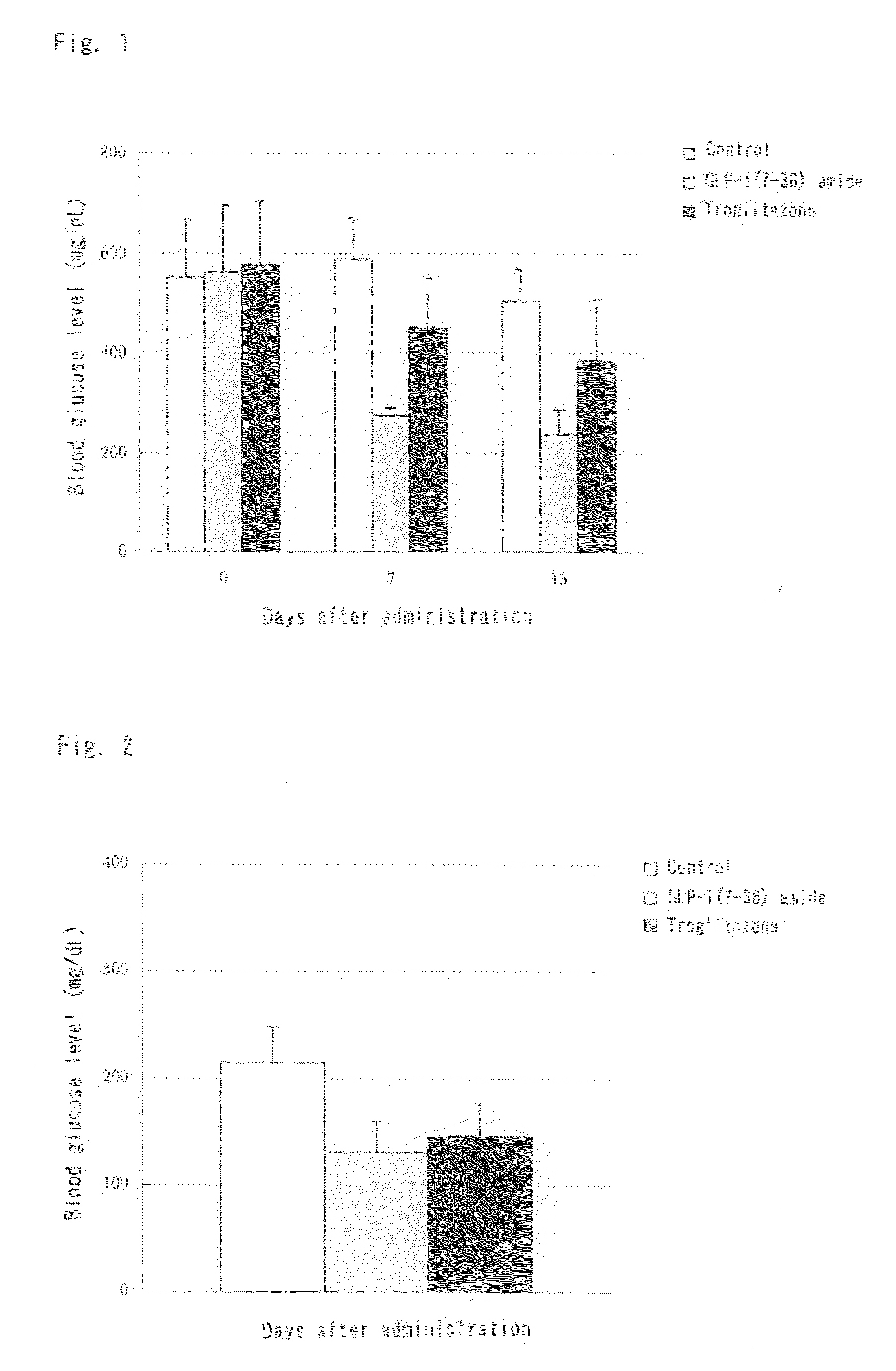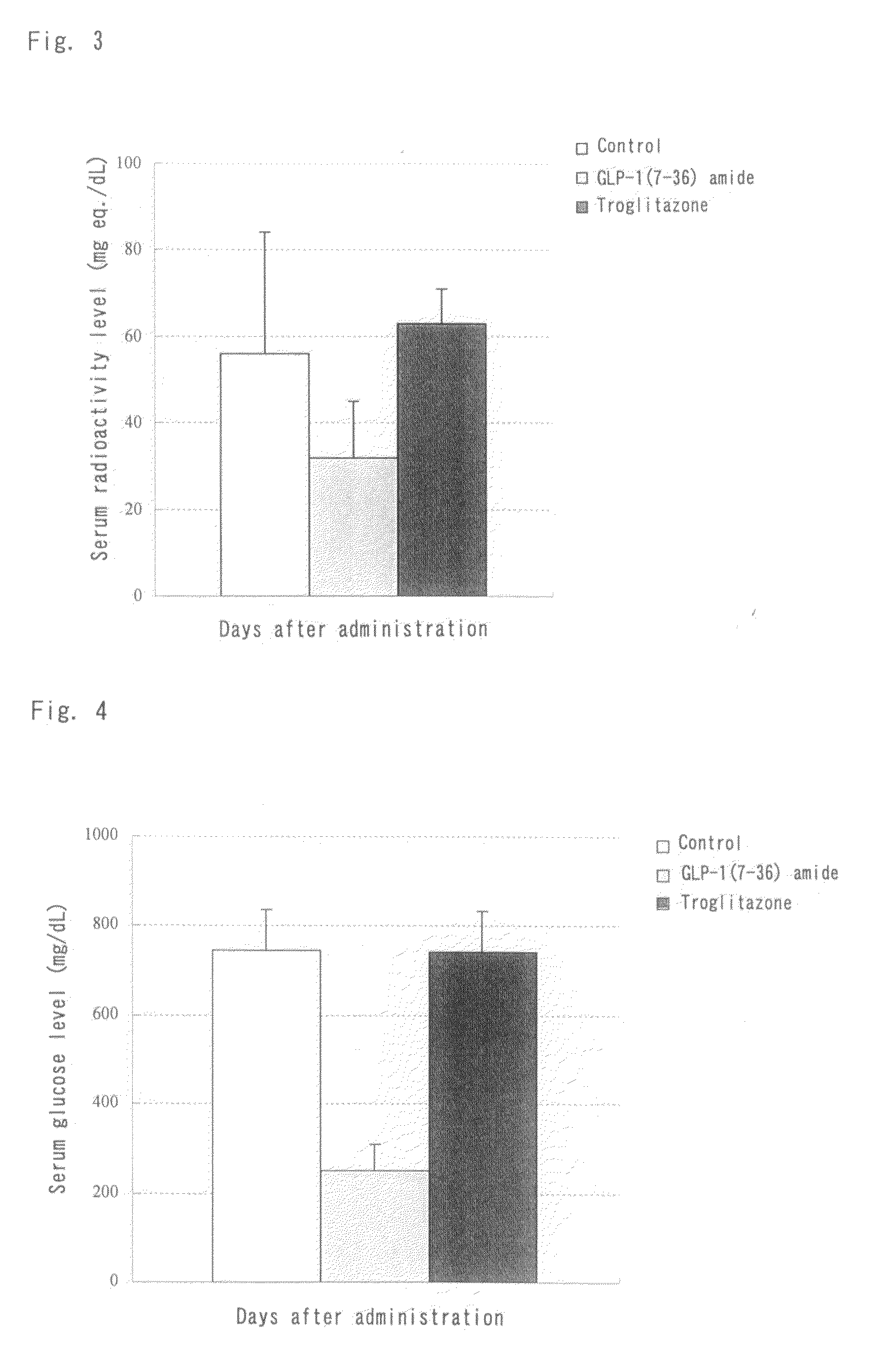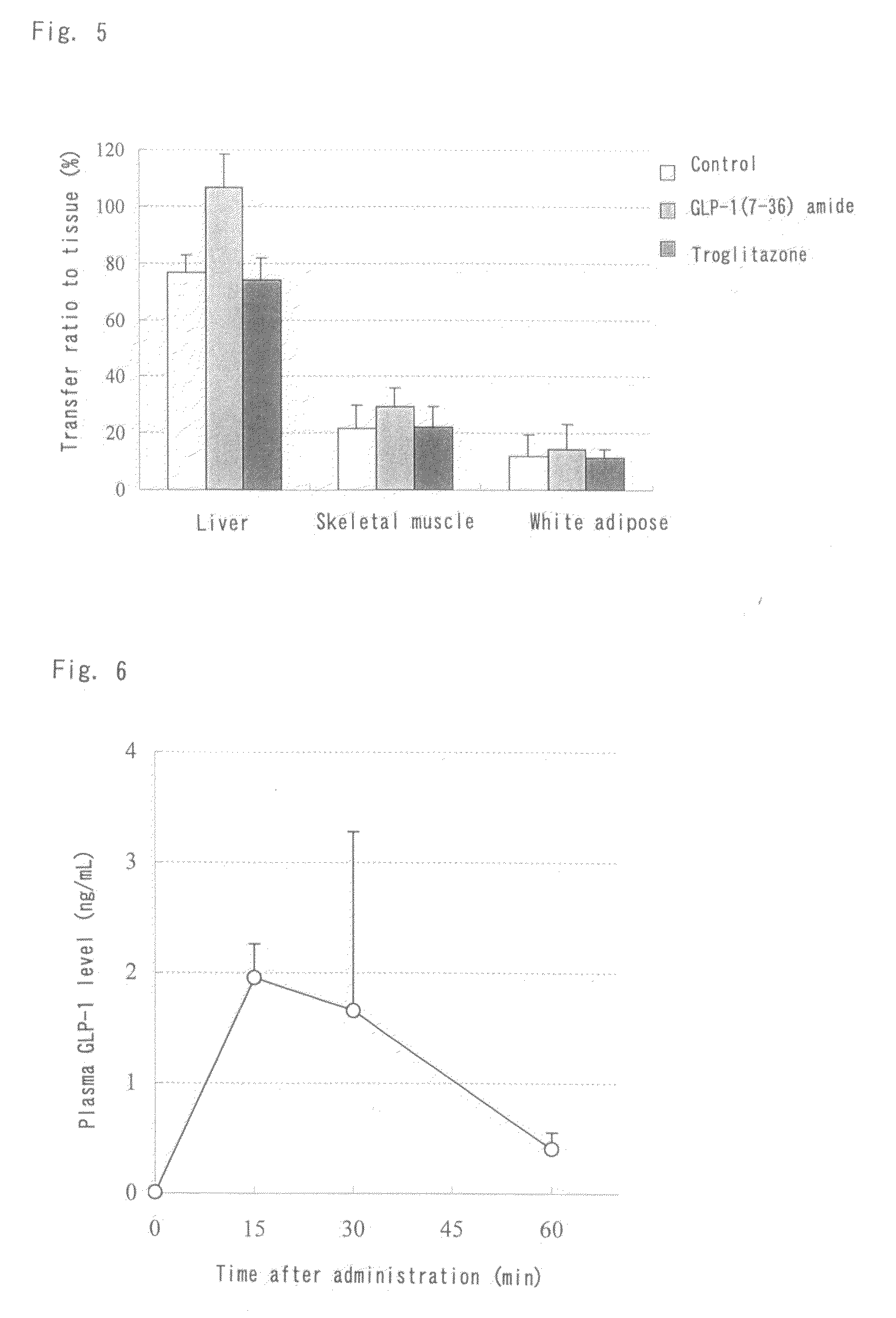Insulin Resistance Improver
- Summary
- Abstract
- Description
- Claims
- Application Information
AI Technical Summary
Benefits of technology
Problems solved by technology
Method used
Image
Examples
example 1
Activity of GLP-1(7-36) Amide Subcutaneously and Repeatedly Administered to KK-Ay / Ta Jcl Insulin Resistance Mouse Model Over a Two-Week Period
[0159]GLP-1(7-36) amide was dissolved in a 25% dextran 70 solution. The solution was subcutaneously administered at a dose of 500 μg / kg / day to male KK-Ay / Ta Jcl mice once daily for 14 consecutive days. The blood glucose levels and the glucose uptake by different tissues were monitored during the administration period. The animals were kept under a 12 h light / 12 h dark circadian cycle (light phase: 7-19 o'clock) and fed a normal diet (solid diet (CRF-1), Oriental Yeast Co., Ltd.) during the repeated administration period.
(1) Groups
[0160]Animals were divided into three groups: a drug-free control group (N=4), a test compound group (N=4) subcutaneously administered 500 μg / kg / day of GLP-1(7-36) amide once daily in the evening (at around 16 o'clock), and a positive control group (N=4) intraperitoneally administered 30 mg / kg of troglitazone, a tradi...
example 2
Activity of GLP-1(7-36) Amide Subcutaneously and Repeatedly Administered to KK-Ay / Ta Jcl Insulin Resistance Mouse Model Over a 8-Week Period
[0172]GLP-1(7-36) amide was dissolved in physiological saline. The solution was subcutaneously administered to male KK-Ay / Ta Jcl mice three times daily for 8 weeks. The effects on the baseline blood glucose levels, glycosylated hemoglobin (HbAlc) levels and plasma insulin levels were examined. Following the final administration, the animals were intraperitoneally administered 0.75 U / kg of insulin and the blood glucose levels were measured over time. The animals were kept under a 12 h light / 12 h dark circadian cycle (light phase: 8-20 o'clock) and fed a normal diet (solid diet (CRF-1), Oriental Yeast Co., Ltd.) during the repeated administration period.
(1) Groups
[0173]Animals were divided into four groups: a control group (N=10) administered the medium (physiological saline), and three test compound groups subcutaneously administered 15, 50 and 1...
example 3
Changes in the Plasma Levels of Active GLP-1 in Male Cynomolgus Monkeys Nasally Administered a Powder Nasal Preparation of GLP-1(7-36) Amide
[0180]A single capsule containing a powder nasal preparation of GLP-1(7-36) amide was mounted on a designated device and the drug powder within the capsule was sprayed into the nasal cavity through the nozzle of the device. The changes in the plasma levels of active GLP-1 were monitored.
(1) Groups
[0181]A 30 mg drug powder containing 30 μg or 100 μg GLP-1(7-36) amide was sprayed into the nasal cavity of four cynomolgus monkeys.
(2) Evaluation and Results
[0182]Using a commercially available ELISA kit, the plasma levels of active GLP-1 were measured after the administration of the powder nasal preparation of GLP-1(7-36) amide. As shown, the plasma level of active GLP-1 increased to about 0.15 to about 1.0 ng / mL immediately after administration and decreased to the initial level (before administration) 180 minutes (3 hours) after administration (FIG....
PUM
| Property | Measurement | Unit |
|---|---|---|
| Time | aaaaa | aaaaa |
| Mass | aaaaa | aaaaa |
| Time | aaaaa | aaaaa |
Abstract
Description
Claims
Application Information
 Login to View More
Login to View More - Generate Ideas
- Intellectual Property
- Life Sciences
- Materials
- Tech Scout
- Unparalleled Data Quality
- Higher Quality Content
- 60% Fewer Hallucinations
Browse by: Latest US Patents, China's latest patents, Technical Efficacy Thesaurus, Application Domain, Technology Topic, Popular Technical Reports.
© 2025 PatSnap. All rights reserved.Legal|Privacy policy|Modern Slavery Act Transparency Statement|Sitemap|About US| Contact US: help@patsnap.com



